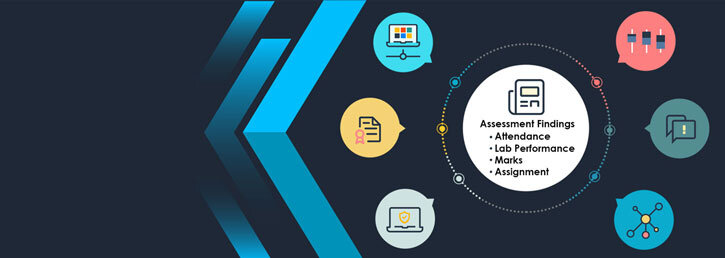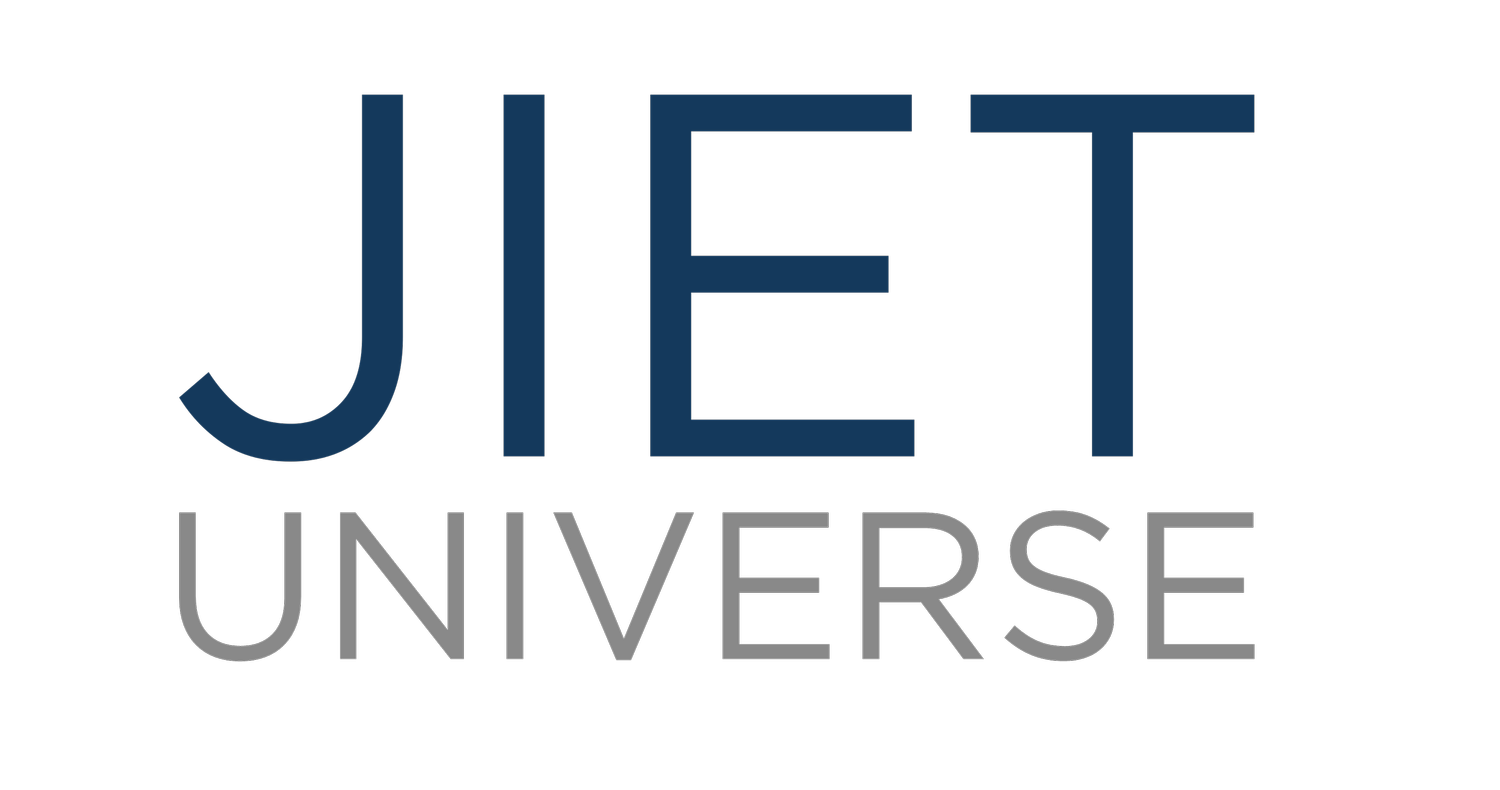
TEACHING PEDAGOGY
Teaching Pedagogy
JIET follows the latest opus of Pedagogical Science. Since its inception, JIET has been imparting the highest level of education. Outcome-Based Education (OBE): Outcome-based education is a model of education that rejects the traditional focus on what the colleges provide to students, favouring making students demonstrate that they "know and can do" whatever the required outcomes are. OBE consists of a series of education that enables a student to stand after the course is complete. There are multiple English language laboratories with state-of-the-art structure, acoustic built and fitted with the latest software and computers for developing language proficiency. Regular attendance is a must for every student. The stricture binds a student to accrue 75% of minimum attendance to appear at an examination. Assessment of students’ performances is regularly monitored under specified rubrics. Questions are set according to Bloom’s Taxonomy so that every domain of the students get attention.
+ OBE MODEL
JIET is the only institute of Rajasthan having NBA Accreditation in four programmes of UG studies in engineering, i.e. CSE, EE, ECE and ME. Being an NBA Accredited institution, JIET follows globally accepted Outcome Based Education Model as suggested by NBA (National Board of Accreditation).OBE means a clear focus on organizing curriculum, instructions and assessment in education around what students should be able to do successfully at the end of the learning experience/period. This means the content, strategy and process followed by educator will lead the learners towards expected learning outcomes, and ultimately learning happens for every learner. In OBE model, the outcome of each course (subject) and programme (branch) is predefined in the form of Course Outcome (CO) and Programme Outcome (PO)/Programme Specific Outcome (PSO) subsequently. The COs contributes to achieving desired POs and PSOs. The POs and PSOs are further mapped with Programme Educational Objectives (PEOs), Vision and Mission of the department. The PO/PSO are short term goal for the department which graduate must demonstrate soon after completion of his/her degree whereas PEOs are long term goal which graduates demonstrate in his/her career after few years of his employment. In order to achieve predefined PO/PSO department map COs of all available courses with listed POs and PSOs and if required, additional courses/activities are designed to bridge the gap. The following is the pictorial representation of the OBE Model:-
+ PROGRAM OUTCOME
Program outcomes are outcomes of the program of UG/PG. Currently, UG technical courses are standard defined 12 POs, out of these 12. First five are domain-dependent POs and the remaining seven POs are domain-independent. All these 12 POs are aligned with 12 graduate attributes decided by Washington Accord. Program-specific outcomes are specific outcomes of the program (according to the stream of specialization). These reflect the competencies aligned with a particular program.
Program-specific outcomes are specific outcomes of the program (according to the stream of specialization). These reflect the competencies aligned with a particular program.
+ COURSE OUTCOME
Classroom practices in OBE should be organized around course outcomes. In the process of designing a course, writing proper course outcomes is very important as these are the guiding statements, which decide every activity to be performed while delivering the course. For writing the course/learning outcomes for each course offered to the students, express the outcomes as knowledge, skills, and attitudes that the students should be able to demonstrate on successful completion of the course using measurable action verbs.
The course outcomes should be SMART, i.e. Specific, Measurable, Attainable, Realistic and Time-Bound. Mostly learning outcomes allow innovative programme design and these are developed in consultation with industry, academia and the profession.
+ OBE-ASSESSMENT AND EVALUATION
The evaluation phase is a systematic process that determines the effectiveness of the instructional design. Assessment involves in the cognitive domain (thinking, knowledge), psychomotor domain (doing, skills) and affective domain (feeling & attitude). It consists of two parts: Formative assessment is a collection of information about student learning during the progression of a course or program in order to improve students' learning. Summative assessment is the gathering of information at the conclusion of a course or program to improve learning. When used for improvement, impacts the next group of students taking the course or program. External evaluations conducted to ensure the robustness of the assessment process. The assessment quantitatively gauges the performance, whereas evaluation qualitatively observes the learning activity outcomes and suggests the remedial measures for filling the gaps between the expected outcome and actual outcomes. The evaluation phase takes the results of 360̊ feedback, and finally, it closes the loop by prescribing the improvements/gap-filling activities in the course.
In the mapping assessment tools with Bloom's taxonomy cognition levels, rubric is a set of criteria for assessing student work or performance. Rubrics are particularly suited to learning outcomes that are complex or not easily quantifiable, for which there are no clear “right” or “wrong” answers, or which are not evaluated with standardized tests or surveys. Assessment of writing, oral communication, critical thinking, or information literacy often requires rubrics. In every Practical Laboratory subject there are two components:-
Internal - Continuous Assessment and Evaluation covers 60% weightage of maximum marks allocated for the lab.
External - End Term University Practical covers 40% weightage of maximum marks allocated for the lab. The Continuous Assessment and Evaluation is further divided.
+ ATTENDANCE POLICY
The Need
The feedback from the faculty and the analysis of university exam result confirm that the failure of students in examinations is largely on account of irregularity in attending classes. In view to ensuring academic excellence, disciplinary approach and growth of students, all the students of JIET Group of Institutions are supposed to achieve at least 80% attendance in all the Lectures, Tutorials and Practical Examinations and Seminars arranged for the respective Course during the session.
The Policy
All students shall be required to put in a minimum of 75% attendance in lectures and tutorials (taken together) and 75% in-sessional and practical at the semester concerned so as to enable him/her to appear at the internal and university examinations. A candidate shall not be permitted to appear in the internal/university examination of the subject(s) in which his/her attendance falls short of the minimum requirement.
The attendance of the students is filled on weekly basis in ERP. The Students may check the same through ERP Mobile App. Students are advised to keep themselves updated regularly and take appropriate timely action in order to avoid disappointment later.
The attendance is being sent to parents on their registered mobile number through SMS. It is the parents' responsibility to inform students cell/tutor if they do not receive the same.
Further, In case of any change in contact detail, Parents and students are advised to get the same updated at student cell counter with sufficient proof.
The list of the students found short of attendance shall be displayed on the College Notice Boards and website.
Parents may (as a matter of courtesy but not a mandatory commitment) also be posted with the information indicating their wards' status.
Our sincere advice
The Institution takes various steps to bring the cases of shortage of attendance to students and their parents' knowledge, as a general welfare measure and not as mandatory statutory requirement.
The students and parents/guardians are requested to cooperate in the implementation of the steps stated above and not to approach the administration for any kind of relaxation.
The Remedial Classes for those who really need it The institute organizes Remedial classes to improve weaker students’ academic performance, specifically in subject(s) in which they haven’t done well in their regular classes & Mid-Term exams. The Classes are arranged for those students whose academic performance is poor.
